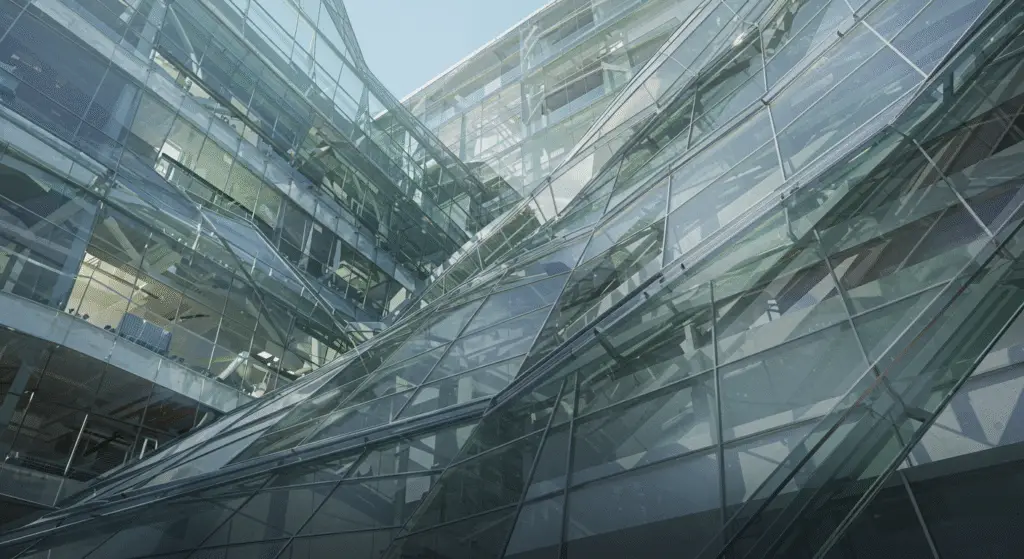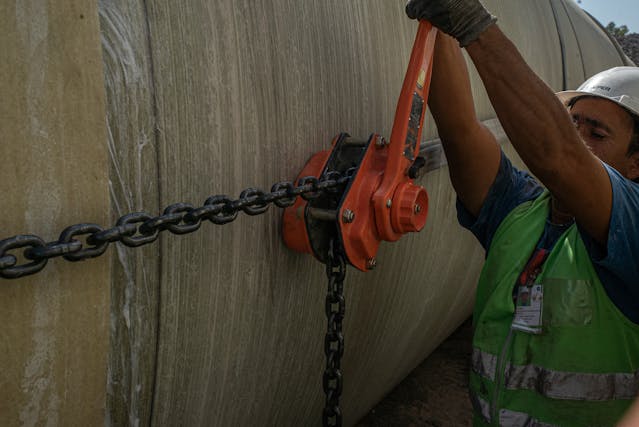Structural Glass Design: A Comprehensive Guide

Introduction
Structural glass design is a revolutionary approach in modern architecture, where glass transcends its traditional role as a mere barrier to become an integral part of a building’s structure. This article explores the intricacies of structural glass design, covering its types, materials, design principles, and future trends, providing a holistic understanding of this innovative architectural element.
Defining Structural Glass Design

Structural glass design refers to the use of glass as a primary structural material in buildings. Unlike traditional glazing, which is primarily for fenestration, structural glass is engineered to bear loads and provide support, while maintaining its transparency and aesthetic appeal. This dual functionality makes it a preferred choice for architects seeking to create open, light-filled spaces without compromising on structural integrity.
Types of Structural Glass
The versatility of structural glass is evident in the various types available, each suited to specific applications:
- Tempered Glass
Tempered glass, or toughened glass, undergoes a heat-treatment process that enhances its strength and thermal resistance. This process makes tempered glass four to five times stronger than annealed glass and ensures it shatters into blunt fragments upon impact, reducing injury risk. It is widely used in structural applications where safety and durability are paramount.
- Laminated Glass
Laminated glass consists of multiple glass layers bonded together with an interlayer material, such as polyvinyl butyral (PVB). This construction provides excellent safety benefits, as the glass remains intact even when broken. Laminated glass is ideal for applications requiring high security and safety, such as skylights and overhead glazing.
- Insulated Glass
Insulated glass, also known as double-glazed or triple-glazed glass, comprises two or more glass panes separated by a spacer and sealant. This configuration reduces heat transfer and noise, making it ideal for energy-efficient buildings. Insulated glass is commonly used in residential and commercial settings where thermal performance is a key consideration.
- Frameless Structural Glass
Frameless structural glass systems minimize visible framing, creating a seamless glass surface. Supported by hidden structural elements, this type of glazing offers unobstructed views and a modern, minimalist aesthetic, making it suitable for high-end architectural projects.
- Point-Fixed Structural Glass
Point-fixed structural glass uses individual fixings or fittings to secure glass panels, eliminating the need for a continuous frame. This system allows for complex designs and provides excellent transparency, ideal for creating unique architectural features.

Materials Used in Structural Glass Design
The effectiveness of structural glass design depends on the materials used, which must provide the necessary strength, durability, and aesthetic appeal:
- Glass
The primary material in structural glass design, glass is available in various types, each with distinct properties. Tempered, laminated, and insulated glass are commonly used, depending on the specific requirements of the application.
- Metal Frames
Metal frames, typically made from aluminum or steel, provide structural support for glass panels. These frames are designed to distribute loads evenly and can be customized to suit different design requirements.
- Silicone Sealants
Silicone sealants are used to bond glass panels together and to metal frames, ensuring a watertight and airtight seal. Their flexibility and durability are crucial for maintaining the integrity of the glazing system.
- Adhesives
Adhesives play a vital role in laminated glass, bonding multiple layers together. They ensure the structural integrity of the glass under various stresses.
- Reinforcing Materials
Reinforcing materials, such as fiberglass or carbon fiber, can be incorporated into glass structures to enhance strength and stability. These materials are often used in composite glass products where additional structural integrity is required.
Structural Properties of Glass
Understanding the structural properties of glass is essential for effective design:
- Strength
Glass is known for its high compressive strength, making it suitable for bearing loads. However, its tensile strength is relatively low, necessitating tempering and laminating processes to enhance its performance in structural applications.
- Flexibility
Glass exhibits limited flexibility, which can be a disadvantage in structural applications where movement and deformation are expected. The use of laminated glass and flexible sealants can mitigate this limitation.
- Thermal Expansion
Glass expands and contracts with temperature changes, leading to thermal stress. The coefficient of thermal expansion (CTE) varies among glass types, and this must be considered in structural design to prevent cracking and shattering.
- Durability
The durability of glass in structural applications is influenced by its resistance to environmental factors such as weathering, chemical exposure, and impact. Specialized glasses and protective coatings can enhance durability in harsh conditions.
Design Principles and Engineering Considerations
The successful implementation of structural glass design relies on sound engineering and design principles:
- Load Calculations
Engineers must perform detailed load calculations to ensure the glass structure can withstand various loads, including dead loads, live loads, wind loads, and seismic forces.
- Stress Distribution
Understanding how stress is distributed across the glass structure is crucial for maintaining integrity. The design must ensure even stress distribution to prevent excessive force on any single point.
- Safety Standards
Adherence to safety standards is paramount in structural glass design. This includes ensuring the glass can withstand impact and that its failure does not pose a risk to occupants.
- Material Compatibility
The compatibility of materials used in conjunction with glass must be carefully considered to prevent adverse reactions or degradation over time.
Case Studies: Famous Structural Glass Applications
Examining real-world applications of structural glass provides insights into its practical uses and benefits:
- The Crystal Palace, London
The Crystal Palace, built for the Great Exhibition of 1851, was a pioneering structure showcasing the potential of glass in architecture. Its large glass and iron frame demonstrated the feasibility of using glass in grand-scale structures.
- The Guggenheim Museum, Bilbao
The Guggenheim Museum in Bilbao, Spain, features extensive use of structural glass in its atrium and skylights. The flowing curves of the glass design create a sense of fluidity and space, while maintaining structural integrity.
- The Apple Park, Cupertino
Apple Park, the headquarters of Apple Inc., incorporates large glass panels and domes in its design. The use of structural glass allows for an open and airy interior, while the glass’s strength and durability ensure the structure’s stability.
- The Shard, London
The Shard, one of the tallest buildings in Europe, features a sleek and modern glass facade providing stunning views of the city. The structural glazing system is designed to withstand various environmental conditions, including wind and seismic activity.
- The Burj Khalifa, Dubai
The Burj Khalifa, the tallest building in the world, features a double-layered structural glazing system that provides excellent thermal insulation and energy efficiency. This system reduces heat transfer and minimizes the need for air conditioning in the hot desert climate
Challenges and Limitations
While structural glass design offers numerous benefits, it also presents challenges and limitations:
- Cost
Structural glass systems can be expensive, especially for specialized or high-performance systems. The cost of materials, manufacturing, and installation can be prohibitive for some projects.
- Maintenance
Regular maintenance is essential to ensure the longevity of structural glass systems. This includes cleaning, inspecting for damage, and addressing issues promptly to prevent further deterioration.
- Thermal Stress
Glass expands and contracts with temperature changes, leading to thermal stress. This can cause cracking or shattering if not properly addressed in the design and installation of the system.
- Brittleness
Glass is inherently brittle, lacking the ability to deform plastically under stress. This can lead to sudden and catastrophic failure if subjected to excessive force.
- Material Compatibility
Ensuring the compatibility of materials used in structural glass systems is crucial to prevent adverse reactions or degradation over time.
Future Trends and Innovations
The future of structural glass design is promising, with ongoing research and development focused on improving its properties and expanding its applications:
- Advanced Glass Materials
The development of new glass materials with enhanced strength, flexibility, and thermal resistance could revolutionize structural glass applications. These materials may include nanomaterials, smart glasses, and advanced composites.
- Energy-Efficient Glazing
There is a growing emphasis on energy efficiency in building design. The development of energy-efficient glazing systems, such as triple-glazed and smart glazing, could significantly reduce energy consumption and enhance building performance.
- 3D Printing and Digital Fabrication
Advancements in 3D printing and digital fabrication techniques could enable the creation of complex glass structures with unprecedented precision and efficiency. This could lead to innovative and cost-effective solutions for structural glass applications.
- Integration with Smart Technologies
The integration of smart technologies into structural glass systems could offer new functionalities, such as self-cleaning surfaces, adaptive shading, and real-time monitoring of structural health. These technologies could enhance the performance and sustainability of glass structures.
- Sustainable and Green Building Practices
There is a growing emphasis on sustainable and green building practices in the construction industry. Structural glass systems that incorporate recycled materials, reduce energy consumption, and minimize environmental impact will play a crucial role in the development of sustainable buildings.
Conclusion
Structural glass design is a testament to human ingenuity and the relentless pursuit of innovation in architecture. By understanding the types of glass, materials, and design principles involved, architects and engineers can create innovative and functional designs that meet the demands of modern architecture. As research continues to advance, structural glass design will remain at the forefront of architectural innovation, offering solutions that are both aesthetically pleasing and functionally superior.
The journey of structural glass design from its early applications to its current state is a story of continuous improvement and adaptation. As we look to the future, the potential for further innovation is vast, promising even more exciting developments in the world of structural glass design. Whether it’s through the creation of advanced glass materials, the integration of smart technologies, or the adoption of sustainable building practices, structural glass will undoubtedly continue to shape the built environment in ways we have yet to imagine.
In conclusion, structural glass design is more than just a material; it is a tool for creating spaces that inspire, connect, and enhance our daily lives. As we continue to explore the possibilities of structural glass design, we will uncover new ways to use this versatile material to build a better and more sustainable future.
- https://worldcivilsociety.com/what-are-the-materials-used-in-structural-glass/
- https://worldcivilsociety.com/what-are-the-structural-properties-of-glass-a-comprehensive-overview/
- https://worldcivilsociety.com/what-are-the-5-stages-of-structural-design-how-to-structural-design-works/
- https://worldcivilsociety.com/how-to-weigh-the-advantages-and-disadvantages-in-structural-engineering/
- https://worldcivilsociety.com/the-backbone-of-engineering-and-how-to-understand-the-importance-of-structures/
- https://worldcivilsociety.com/what-are-the-5-pillars-of-engineering/
- https://worldcivilsociety.com/what-are-engineering-fundamentals/
- https://worldcivilsociety.com/ranking-the-most-difficulty-of-engineering-majors/
- https://worldcivilsociety.com/which-engineering-has-the-least-math/
- https://worldcivilsociety.com/which-engineering-is-the-most-in-demand/
- https://worldcivilsociety.com/which-engineering-is-most-difficult/

Structural Glass Design
Structural glass design is a revolutionary approach in modern architecture, where glass transcends its traditional role as a mere barrier to become an integral part of a building's structure.
Pingback: What are some examples of things structural engineers design? – worldcivilsociety.com
Pingback: The Difference Between a Civil Engineer and a Structural Engineer